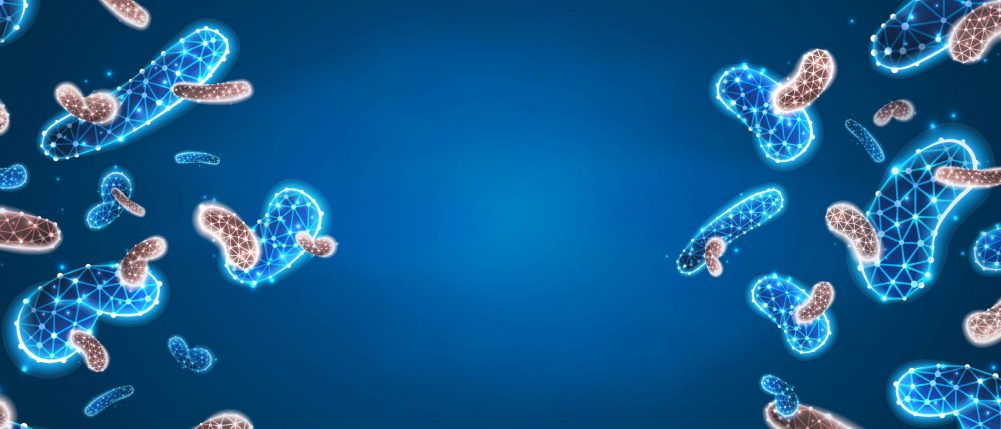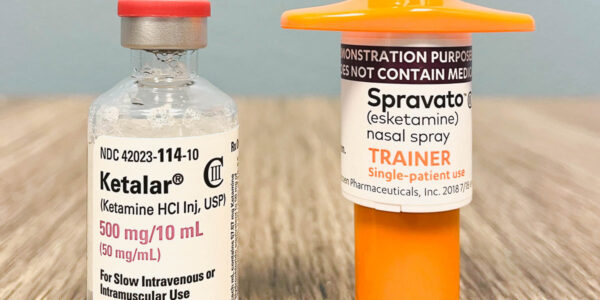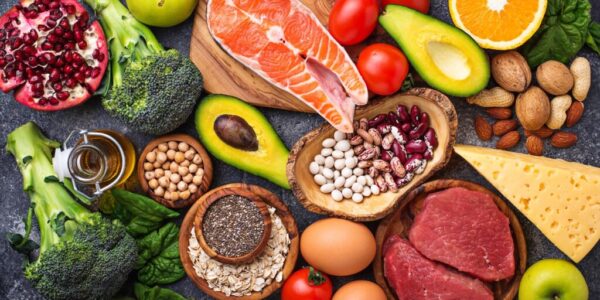LISTEN TO THIS ARTICLE:
A brand new study has discovered 13 types of gut bacteria that increase the risk of depression. This adds support to what people thought for a long time. We have intuitively felt the connection between our mental states and our digestive tract. It comes across in our turns of phrase: following a ‘gut’ feeling or getting ‘butterflies in your stomach.’
Most people who have ever suffered from depression or anxiety can confirm this link to gut bacteria. A depressed mood frequently causes such significant changes in appetite that people will gain or lose weight. Irregular bowel movements as well as cramping and nausea also strike these individuals. Anxiety can make your stomach churn, and panic attacks may bring people to the point of vomiting. With these symptoms in mind, is it any wonder that the reverse also occurs – that the status of the gut can alter the brain?
The accelerating field of research in this area is revealing that there is a complex interplay between the brain and the gut. This is more involved than a simple this-causes-that scenario, though. Instead, there is a dynamic balance between these two parts of the body that involves other key players, including the immune system, the vagus nerve, and the body’s stress response system.
New discovery about gut bacteria and depression
News of this fresh research broke earlier this month. Scientists surveyed levels of gut bacteria in thousands of people and connected their results with people who reported symptoms of depression. The study found especially high levels of 13 types of gut bacteria in these people. Those gut bacteria are involved in making neurotransmitters that are critical to mood and the development of depression. These chemicals include serotonin, glutamate, butyrate, and GABA.
What is the “gut microbiome”?
Most people feel surprised to learn that the human digestive tract contains over 100 trillion bacteria of more than 1000 different species. That’s about ten times as many human cells that make up the whole body. This army of bacteria (along with a few fungi, yeasts, viruses, and other single celled organisms) plays a crucial role in maintaining health.
They manufacture chemicals from dietary fiber that help keep the lining of the gut working properly. They also help it maintain healthy, balanced levels of bacteria. The bacteria even provide the main source of energy for the human cells lining the colon. Some molecules they make travel all the way to the liver where they regulate the feeling of fullness after eating. They also aid the liver in managing blood sugar by telling it to produce more from energy stores and release it into the blood stream. These chemicals from the gut move throughout the body to manage the metabolism of cholesterol and fat, which, in turn, direct appetite. They are additionally active in the metabolism of bile, which is crucial for the body’s absorption of fats.
Where does the gut microbiome come from?
The gut microbiome develops during the first few years of life and is fully mature by age 3. Babies born prematurely struggle with this process, which also influences the growth of the gut’s lining. How infants are fed (breast vs. bottle), how they are delivered (vaginally vs. C-section), early exposures, and antibiotic use all determine the microbiome’s makeup.
What if you lose your gut bacteria?
Diversity in the types of gut bacteria is very important, and low diversity is found in people with several medical illnesses. These include metabolic issues like Type 1 Diabetes, Type 2 Diabetes, and obesity; autoimmune diseases such as Celiac Disease, inflammatory bowel diseases, and Eczema; and neurological disorders, including Multiple Sclerosis, Parkinson’s Disease, and autism spectrum disorders.
Many experiments with mice and rats demonstrate the effects of living without any gut microbiome at all. These animals suffer crucial deficiencies in major body systems, especially the stress-response system and the immune system. Studies show that, without a gut microbiome, the animals react much more intensely to stress than their healthy brethren. Additionally, their brains are functionally different with a disruption in the levels of brain signaling chemicals.
Immune systems take a big hit, too. Experimental animals have trouble developing effective immune mechanisms in the areas of the body that are regularly exposed to environmental threats, like the digestive tract, the genitals, and the respiratory system. Their bodies struggle to mount appropriate immune reactions to infection and have difficulty controlling inflammation.
How are the brain and gut connected?
The brain and gut communicate by a complicated, overlapping series of mechanisms in the immune, neurological, and endocrine systems. The most important set of connections is via the stress response system. The stress response system ultimately controls the levels of the hormone cortisol. This has widespread effects in many body systems, including the immune system, metabolism, sleep cycles, and mood. The gut microbiome influences this system by helping to manufacture a number of signaling chemicals that regulate it.
The microbiome produces a number of chemicals that influence many processes throughout the body for better and for worse. A few studies have implicated high levels of lactate (produced by gut bacteria) in chronic fatigue syndrome. The microbiome’s ammonia production contributes to mental difficulties and coordination problems in people with liver cirrhosis. Short chain fatty acids (SCFAs) are a series of microbiome byproducts that have anti-inflammatory effects and play a role in maintaining healthy body weight. However, some types of SCFAs may be toxic and might play a role in explaining the dietary sensitivities associated with autism spectrum disorders.
Messaging modes
One of the most important group of chemicals that gut bacteria produce are brain signaling chemicals. These molecules, like serotonin, dopamine, and norepinephrine, travel into the bloodstream and impact the body’s nervous system. The bacteria also play a major role in serotonin creation because they are a main source of the raw materials that cells in the brain use to make that crucial chemical.
The details of these exact mechanisms are still murky but they likely involve the vagus nerve. This nerve comes directly out of the brain and innervates the heart, lungs, and intestines. This influence goes in the other direction as well. Stressors originally sensed by the brain and spinal cord can affect gut motility (the muscular contractions that move food through the intestines) and gut permeability (what can get into the body from the gut and what can’t). The second of these effects, which allows chemicals to enter the body when they otherwise wouldn’t be able to, is a critical piece to understanding the link between microbiome health and mental health.
How does gut bacteria connect to mental illness like depression?
The early evidence about the connection between the gut microbiome and mental health points to inflammation as a key intermediary. Emotional stress occurs in an individual’s life, and the brain perceives and processes that stress. This activates the body’s stress response system, which makes the lining of the intestine more porous, just one part of a wide spread bodily reaction.
This is called a “leaky gut” or, more scientifically, “increased intestinal permeability.” In this state, substances that should normally stay inside the gut, leak into the body and wreak havoc. These harmful chemicals are largely the molecules that make up the outer walls of bacterial cells. They cause no problems when they stay in the gut. However, when they get through the lining and into the body, they cause widespread inflammation.
The danger of inflammation
Inflammation is linked to a huge variety of illnesses, including Alzheimer’s Disease, Parkinson’s Disease, Multiple Sclerosis, Lupus, Celiac Disease, Crohn’s Disease, Ulcerative Colitis, Type I Diabetes, Irritable Bowel Syndrome, and Chronic Fatigue Syndrome. Many of these diseases are brain-based, demonstrating the ability of this inflammation to affect that part of the body. This happens remotely, via nerves leading back to the brain, and directly, by immune cells and inflammatory molecules that move to the brain to also cause inflammation. This sets the stage for inflammation to potentially play a role in mental health disorders.
Inflammation in the brain causes a host of negative affects by activating immune cells in the brain. In an inflammatory state, these cells release chemicals that damage the crucial barrier wall between the brain and the blood. This allows even more harmful chemicals from around the body to enter the brain. With all of this going on, the brain slows production of major neurotransmitters, including serotonin, dopamine, and norepinephrine. These cascading steps all contribute to developing mental health disorders, such as depression and anxiety. They may also help explain the elevated rates of those mental issues in inflammatory disorders like Multiple Sclerosis and Inflammatory Bowel Disease.
Supporting evidence
A growing number of studies support this new theory. Recent research comparing depressed and non-depressed people has consistently revealed significantly higher levels of inflammation in those with depressive symptoms. Additionally, this connection was stronger for people with more severe depression. That may help explain the large group of people whose depression does not respond well to anti-depressants. When people take medications that promote inflammation (like Interferon), they frequently develop symptoms of depression and anxiety. Studies exposing animals to stress have produced similar results linking brain inflammation to depression and anxiety symptoms.
The path to a healthy gut microbiome
Many studies are beginning to show the potential impact that what we eat has on our emotional states, as well as how those same emotions can impact our gut bacteria. Probiotics and prebiotics are the two main resources we have here. Probiotics are single-celled organisms similar to those in our gut, while prebiotics are foods that support them.
The best sources of probiotics are fermented foods, including dairy products, soy products, and certain fermented vegetables. Foods to look for include yogurt, kefir, cheese, miso, tempeh, pickles, kimchi, sauerkraut, and kombucha. Their labels will read “live cultures” and may list the specific types of bacteria and yeast that are present. The most common types to look for are Lactobacillus and Bifidobacterium.
Prebiotics, the foods that nourish probiotics, come in the form of certain types of dietary fiber. These come mainly in vegetables and fruits like asparagus, artichokes, bananas, leeks, onions, whole wheats, oats, and soy products. Adding any of these to a few meals a week can help support healthy gut bacteria.
Part of a holistic approach
An increasing number of studies of probiotics contained in these foods show the potential for positive effects in many health conditions, including psychiatric ones. Many have demonstrated an ability to improve depressed mood and anxiety. Additionally, studies with animals treated with these bacteria had lower levels of stress hormones like cortisol and less activation of the body’s stress system in general after they were placed in stressful situations. Other research shows improvement in nausea and abdominal upset in people with irritable bowel syndrome (IBS). However, large doses of prebiotics can have the opposite effect in IBS and should be avoided. Similar experiments also revealed benefits to cognition for people with chronic fatigue syndrome (CFS).
Please be sure to remember that probiotics and prebiotics in no way replace medication as treatment for illnesses. Instead, think of these as additional resources for staying healthy and potentially making some symptoms less severe. They are part of a more holistic approach to health as more research proves how interconnected our body’s systems truly are.


 Learn
Learn Read Stories
Read Stories Get News
Get News Find Help
Find Help
 Share
Share
 Share
Share
 Share
Share
 Share
Share



